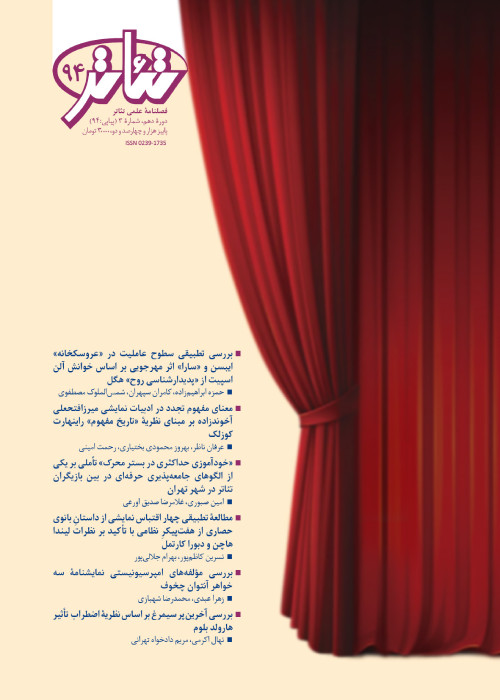Transformation of Iranian Comedy in the Face of Modernism
The present study, considering the need for the analytical study of the evolution of traditional Iranian plays, investigates the effects of social, political and cultural developments on the Iranian imitation ceremonies in the Pahlavi era, a period that has been less considered by scholars in this field, and seeks an answer to this question: What are the influences of the prevailing social and political conditions and cultural developments of this period on the stories and the way of performing the imitation ceremonies? So for this reason; Sociological analysis of documents, especially recorded texts, left over from joyous ceremonies in its various forms, some of which were recorded in the Performing Arts Documentation Center in the Shahr Theater Library, some have been documented by previous researchers in this field, and some have been acquired from personal archives. This study, identifying and analyzing the changes and developments that have taken place in the stories and the way of performing various types of traditional joyous ceremonies in this period, in the end concludes that: During this period, traditional joyous performances experienced their short peak time along with the demands of that time and then declined and even some of its genres - such as Siah bazi - at times have been considered as a serious competitor to the imported theaters in Europeanstyle theaters. Accordingly, based on the conditions and suggestions of the time, the interested topics and situations of the audience and social orders, and sometimes with the support of the government, in choosing stories to perform in homes and theaters and using comedy tricks and techniques, received changes and developments according to time and audiences’ demands and sometimes under the influence of imported theater. But despite the effort by those involved in joyous performances due to the tendency of the Pahlavi government and the desire of society to modernize and the loss of natural grounds for the growth and development of ceremonies, gradually began its decline and in the late Pahlavi era had a very bad situation. In addition, in this article, due to the researcher’s access to the documents which have paid less attention, some tricks and changes in stories and in texts of joyous plays are presented for the first time. It is hoped that the findings of this study will be effective in identifying the ambiguous history of Iranian joyous performances and will be used by play writers who are looking to revive and modernize these dramatic genres.
- حق عضویت دریافتی صرف حمایت از نشریات عضو و نگهداری، تکمیل و توسعه مگیران میشود.
- پرداخت حق اشتراک و دانلود مقالات اجازه بازنشر آن در سایر رسانههای چاپی و دیجیتال را به کاربر نمیدهد.


